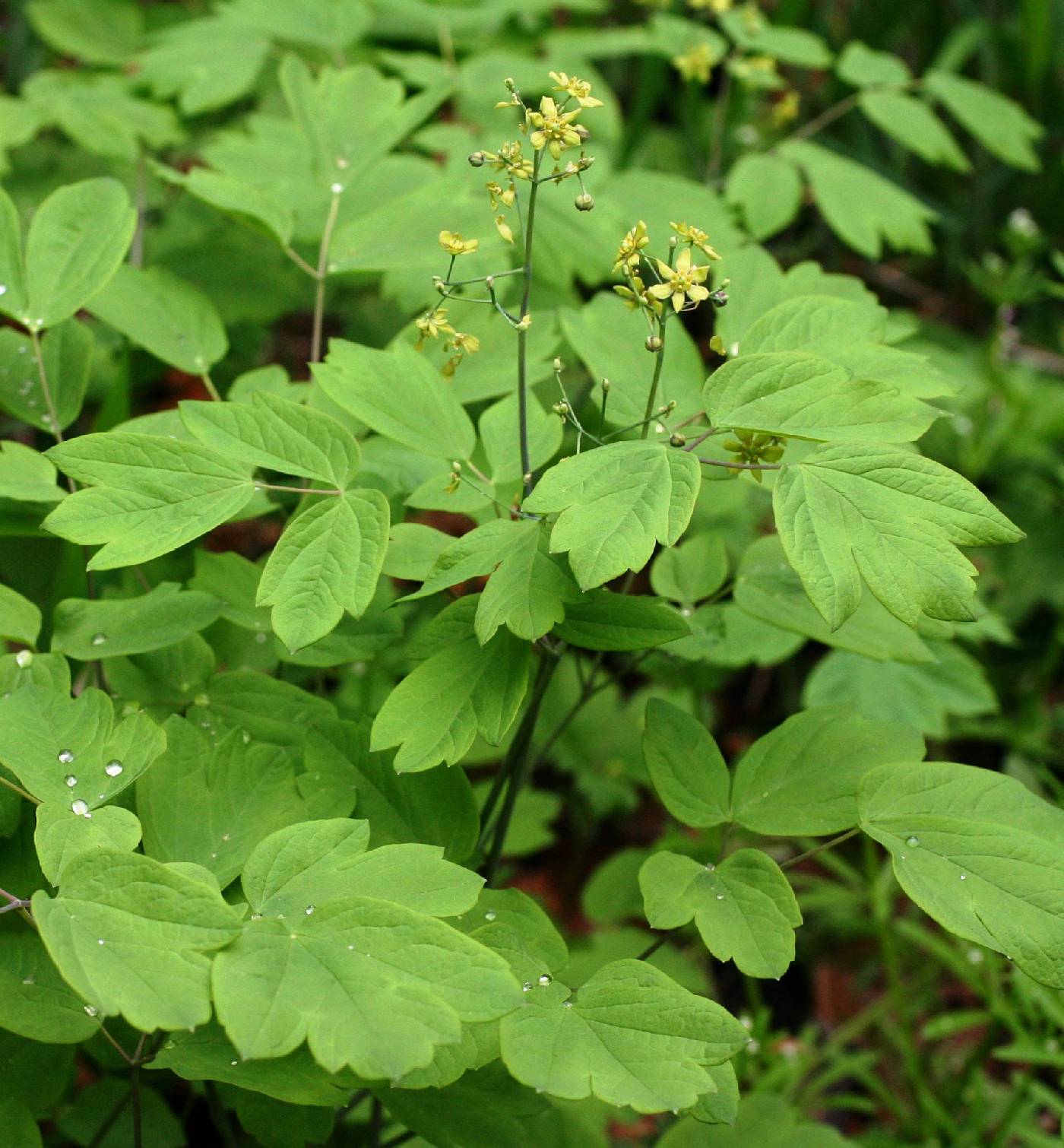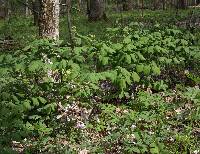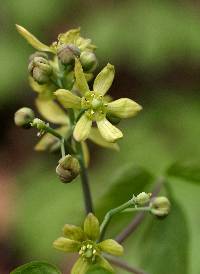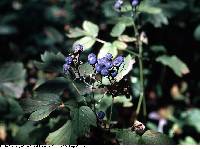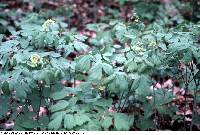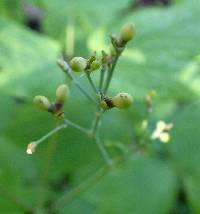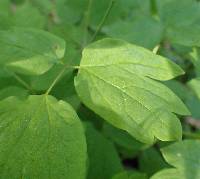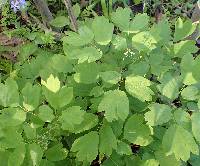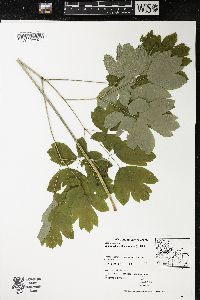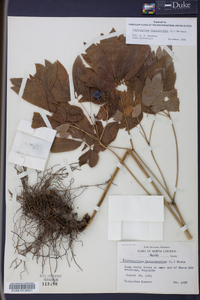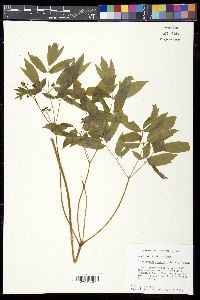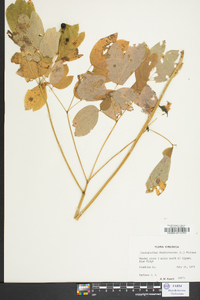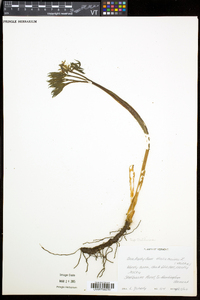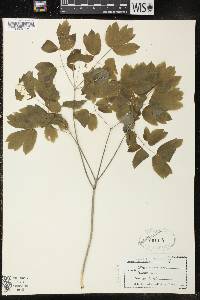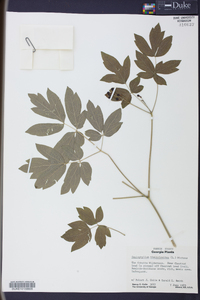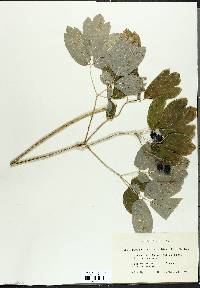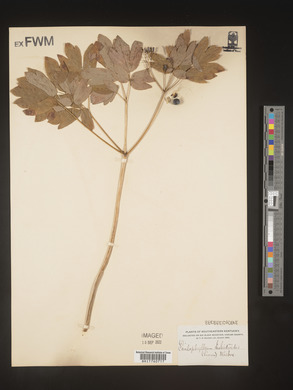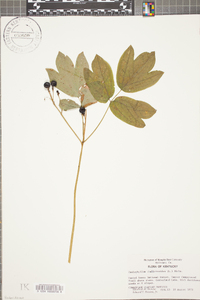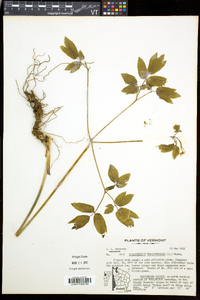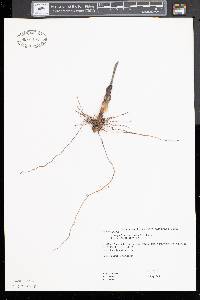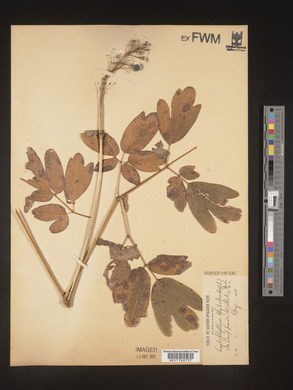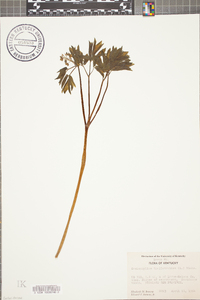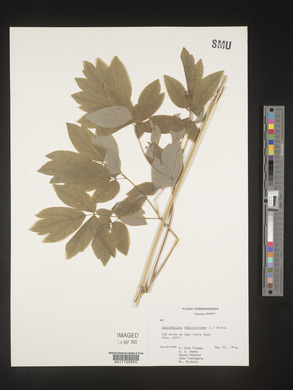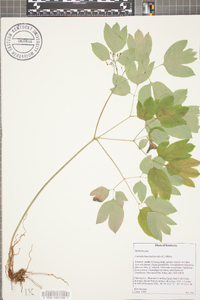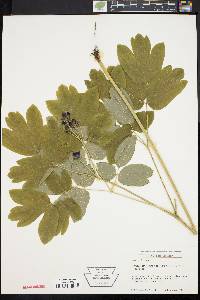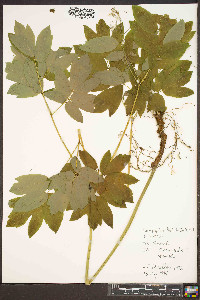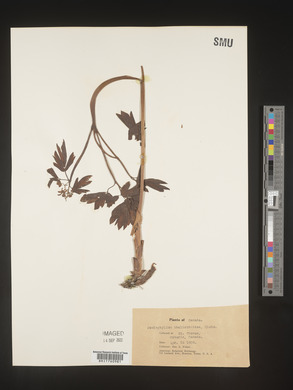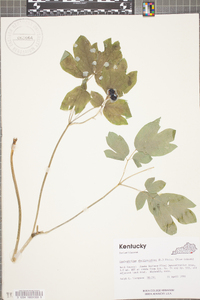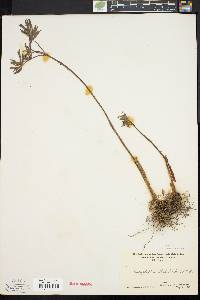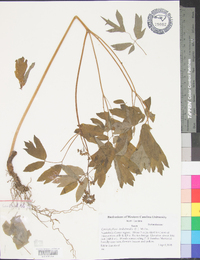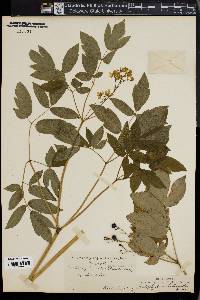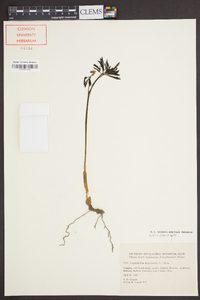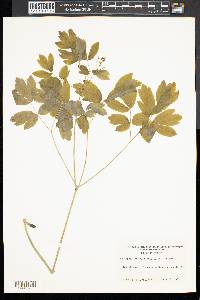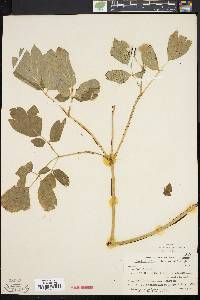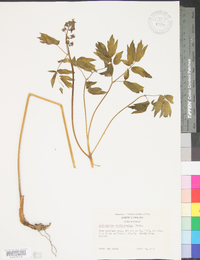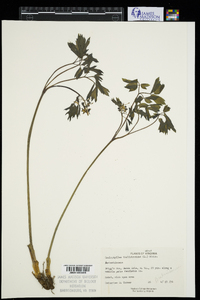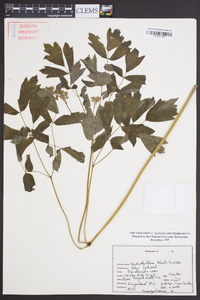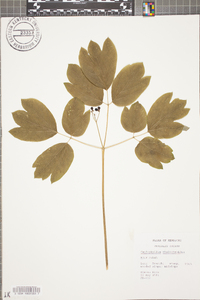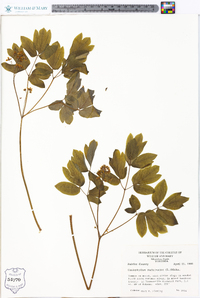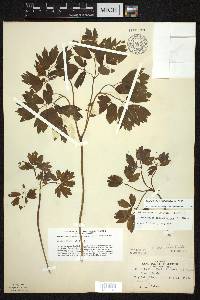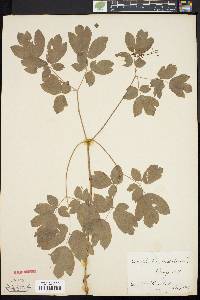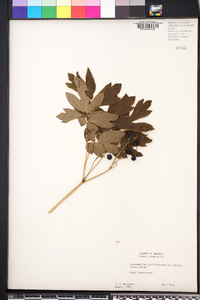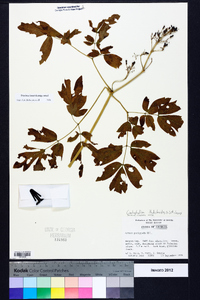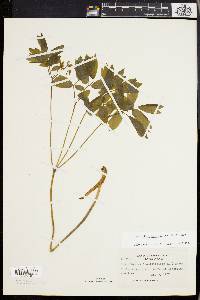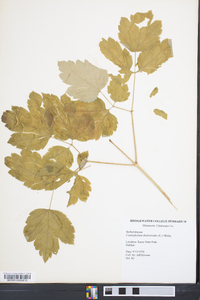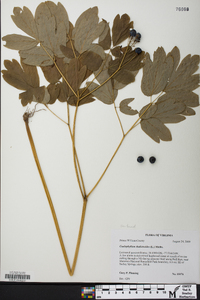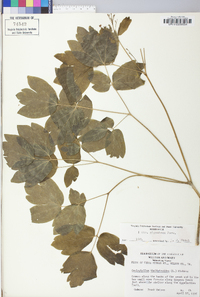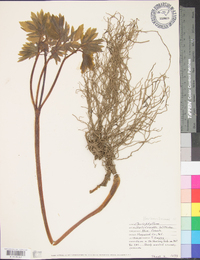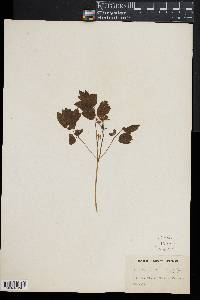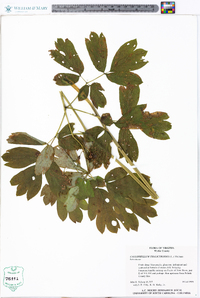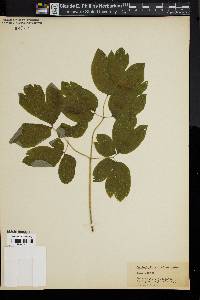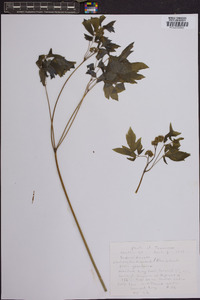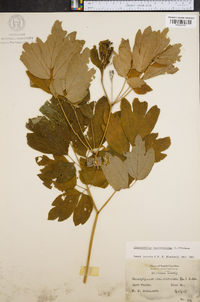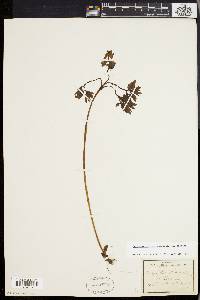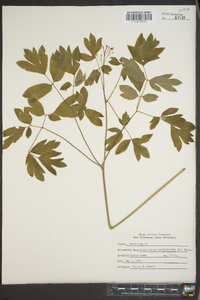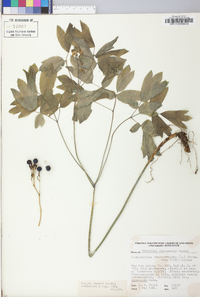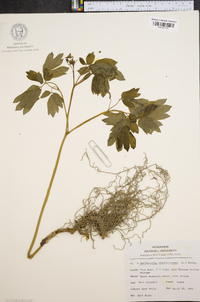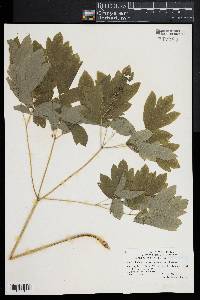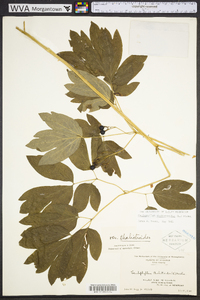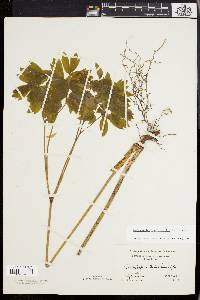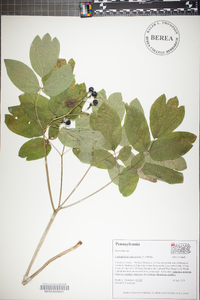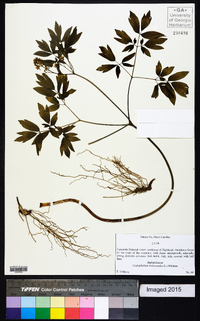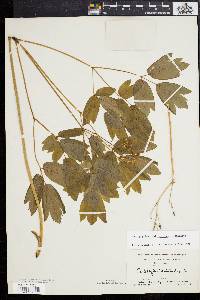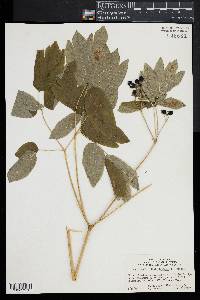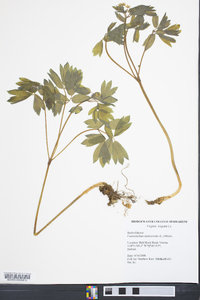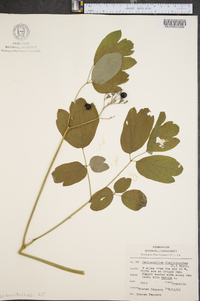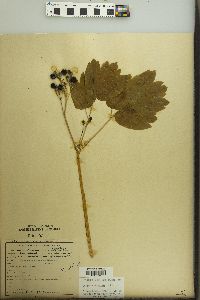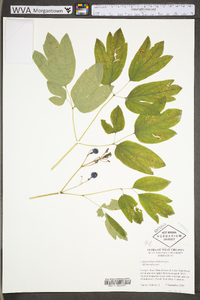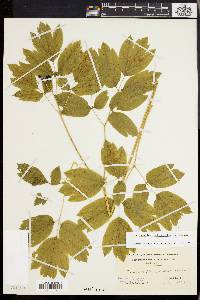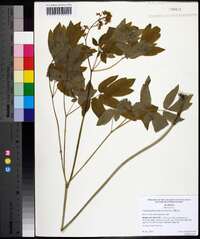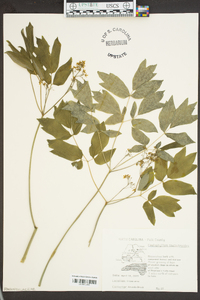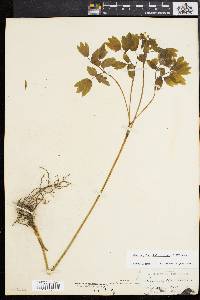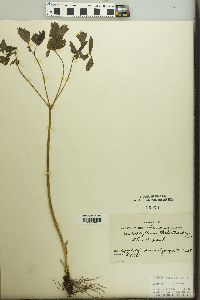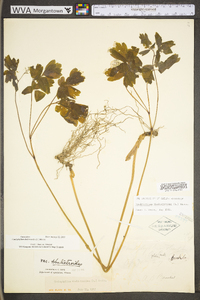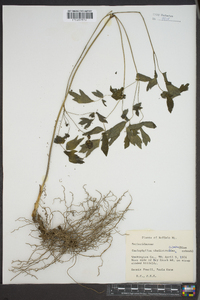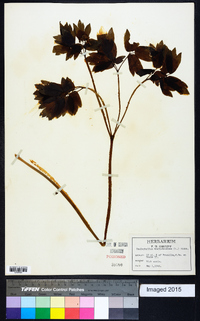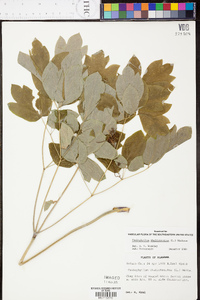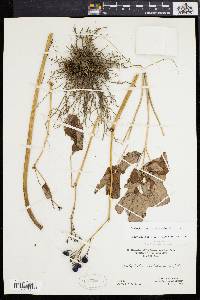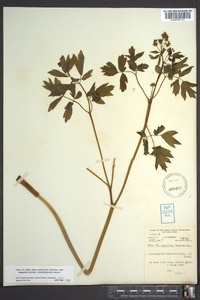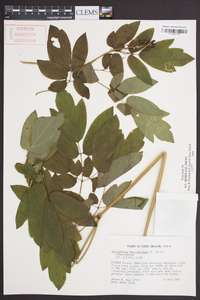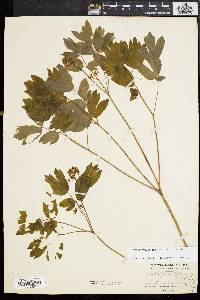
|
|
|
|
Family: Berberidaceae
Blue Cohosh, more...papoose-root
|
Stems 2-9 dm. Leaves: 1st leaf (3-)4-ternate; 2d leaf (2-)3-ternate; leaflets 3-8 × 2-10 cm. Inflorescences with 5-70 flowers. Flowers: bracteoles 1-3 mm; sepals yellow, purple, green, 3-6 2-3 mm, apically revolute; petals 1-2.5 mm; stamen filaments 0.5-1.5 mm; pistil 1-3 mm; style 0.25-1 mm. 2 n = 16. Flowering late spring. Mesophytic forests; 0-1200 m; Man., N.B., Ont., Que.; Ala., Ark., Conn., Del., D.C., Ga., Ill., Ind., Iowa, Kans., Ky., Maine, Md., Mass., Mich., Minn., Mo., Nebr., N.H., N.J., N.Y., N.C., N.Dak., Ohio, Pa., S.C., S.Dak., Tenn., Vt., Va., W.Va., Wis. Native Americans used various preparations of the root of Caulophyllum thalictroides medicinally to treat rheumatism, toothaches, profuse menstruation, indigestion and stomach cramps, fits and hysterics, genito-urinary disfunction, gallstones, and fever, as an aid in childbirth, and as a general tonic (D. E. Moermann 1986).
Perennial herb 20 cm - 0.9 m tall Stem: erect, grayish green, appearing as a stalk for the plant's single leaf. Flowers: borne five to 70 on a terminal inforescence 3 - 6 cm long, yellowish green or greenish purple, with three to four sepal-like bracts, six petal-like sepals 3 - 6 mm long and 2 - 3 mm wide, 0.1 - 0.7 mm styles, and six stamens. The petals are reduced to gland-like nectar-producing structures 1 - 2.5 mm long. Flowers open before leaves are fully expanded. Fruit: undeveloped because ovary is broken by the two developing seeds, exposing the short-stalked, naked seeds. The seeds are dark blue, 5 - 8 mm long, fleshy, and covered with a waxy whitish coating (glaucous). Leaflets: 5 - 8 cm long, 2 - 10 cm wide, oblong to inversely egg-shaped, two-to five-lobed near the tip, covered with a waxy whitish coating (glaucous) when young. Leaf: on a stalk dividing into three branches, with each branch dividing into three more branches and ending in three leaflets (triternate). Similar species: Podophyllum peltatum lacks compound leaves, has a single drooping flower located between two leaves, and a yellow berry. Jeffersonia diphylla has leaves divided into two kidney-shaped segments, flowers borne solitary on a leafless stalk, and brownish capsule-like fruit . Flowering: mid April to late May Habitat and ecology: Locally common in mesic woods, most often growing on northeast-facing slopes. Occurence in the Chicago region: native Etymology: Caulophyllum comes from the Greek words kaulon, meaning stem, and phyllon, meaning leaf, suggesting that the stem appears to be a stalk for the highly branched compound leaf. Thalictroides refers to the resemblance of the leaves to Thalictrum. Author: The Morton Arboretum Erect, 3-8 dm, glaucous when young; lfls obovate- oblong, 2-5-lobed above the middle, 5-8 cm at maturity; infl a small, panicle-like or raceme-like cyme, 3-6 cm; fls yellowish-green or greenish-purple, the slender, spreading, somewhat twisted sep 1 cm; seeds bitter, dark blue, 5-8 mm, on stalks nearly as long; 2n=16. Rich, moist woods; N.B. to Ont. and Man., s. to S.C., Ala., and Mo. Apr., May. Some authors recognize 2 largely sympatric vars. Var. thalictroides has variously yellow, purple or green sep mostly 4-5 mm. Var. giganteum Farw. blooms 2 weeks earlier and has fewer fls larger in all parts, the consistently purple sep 6-8 mm. (C. g.) Gleason, Henry A. & Cronquist, Arthur J. 1991. Manual of vascular plants of northeastern United States and adjacent Canada. lxxv + 910 pp. ©The New York Botanical Garden. All rights reserved. Used by permission. From Flora of Indiana (1940) by Charles C. Deam Infrequent to frequent throughout the state in moist, rich woods. Since the thickened rootstocks have always been much used in medicine, it is surprising to find it as frequent as it is. |
|
|
|
This project was made possible in part by the Institute of Museum and Library Services [MG-70-19-0057-19].
Powered by Symbiota

